1969 Volvo 144S: Blue Box

Remember when Volvos were boxy? I do. My childhood was spent in several Volvo wagons. The blue 1977 245DL that brought me home from the hospital, the pastel yellow ’86 240DL that took us on vacation to the Wisconsin Dells, and the metallic navy blue ’90 740GL wagon that whisked us up to visit friends on Lake Michigan. My folks still have two Volvos—including a classic ’67 1800S I will be writing about someday.
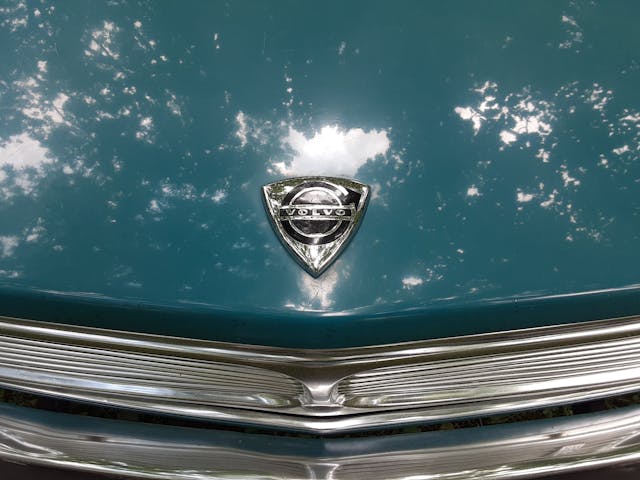
But today I’ll be talking about more prosaic models than the sporty 1800 coupes: the 140 Series. But don’t let its sedan- and wagon-only body styles fool you. This was a technologically advanced car when it debuted and was a key model in Volvo’s success in the U.S. market.
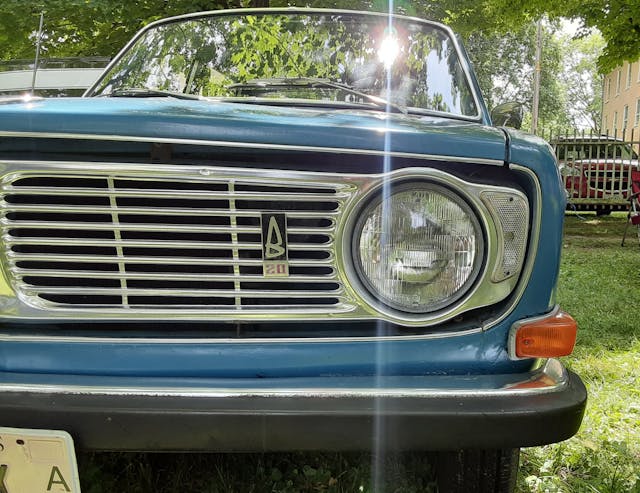
Keep in mind that Volvo was still a relatively small car company in the 1960s. It was big in Scandinavia and was having some initial success since entering the American market in ’56, but planning was still crucial. And the new car had to be done just right. The 140 Series was orignally planned to be evolutionary, compared to the current Amazon lineup, but the first designs were not very well liked. A more ambitious second design was green-lighted and became the 140.

The first cars were shown in August 1966, but production did not significantly ramp up until early 1967. American deliveries began in March 1967. Initial U.S. pricing was $2995 (about $27,411 today) with a manual transmission and $3175 ($29,059) with an automatic. A new and important safety feature was four-wheel disc brakes and a novel dual-circuit braking system. Each circuit was designed to provide full braking on both front wheels and one rear wheel. So even if one circuit failed, you would still have 75 percent of your braking power. This was a first.

Early models were available with either the B18A 85-horsepower four-cylinder engine with a single Zenith Stromberg carburetor, or the B18B engine—the same basic block but with 115 hp and twin SU carburetors. This latter engine was dubbed “S.”

The more powerful engine was very popular; 40 percent of 144s had the “S” engine. While the 140 was only available as a two-door or four-door sedan, a station wagon was added in March 1968 and included a one-piece lift gate, rather than the more traditional tailgate and upward-opening window section.
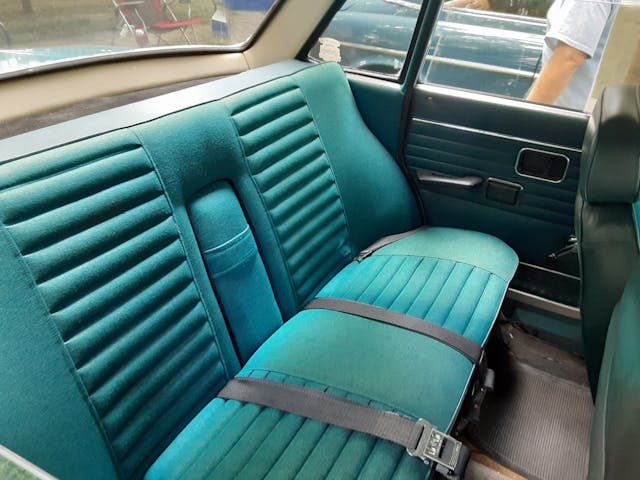
The B20 engine replaced the B18 in autumn 1968. The standard engine now produced 90 horsepower SAE. The “S” engine had 118 hp SAE. Another new change was fabric upholstery replacing the earlier vinyl/plastic seats.
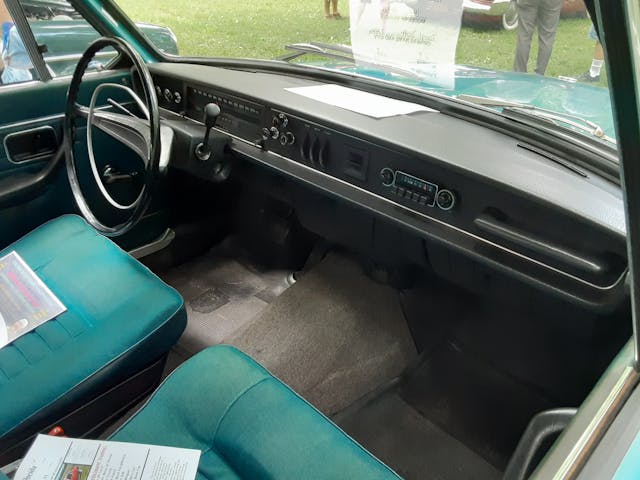
The 140 was becoming a popular import in the U.S. market, and Volvo found its niche growing in the land of the free. It sold 33,189 cars in America in 1967. Modifications to the line through the years were more minor refinements than huge changes. Starting in 1970, front head rests were standard, and the back seat gained three seat belts. An anti-dazzle rear view mirror was also added, along with hazard lights and flow-through ventilation.

The 1971 model year saw a new grille with the now-famous angled cross bar added (which was used on many Volvos in earlier years, right back to the first Volvo, the 1927 “Jakob”)—except for base models, which carried on with the old grille treatment. New wheels with larger cooling slots and smaller hub caps were also added. In 1973, larger bumpers and yet another new grille and bigger taillights changed the look a bit. A year later, the ’74s were much the same except for truly huge “safety” bumpers. And that was the swan song for the 140, though the 1975 240 was about three-quarters carryover 140, except for the front end. And the 240 proved to be truly evergreen, lasting a way, way, wayyyy long time (to 1993) before finally being put out to pasture.
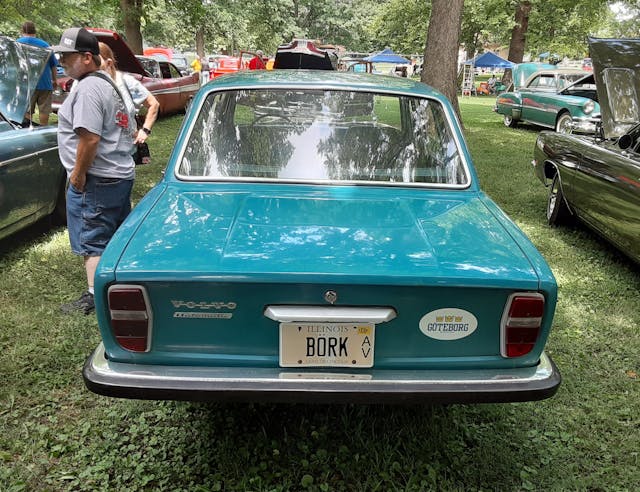
I spied our featured 144S at the annual Bishop Hill, Illinois, car show last summer. It is always a great event, held in a picturesque little town with Swedish roots, in a picturesque park right on the main drag. I was especially pleased to see several classic Volvos there, including a yellow 1970–71 1800E, an Amazon, a 544 Sport, and this time-capsule 144S. I also loved the “BORK” personalized license plate on this car. The Muppets’ Swedish Chef would approve.
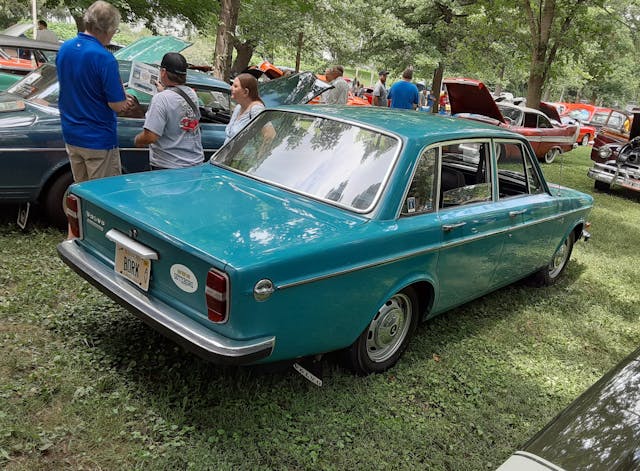
Ingvar Hallstrom, a friend of mine who lives in Sweden, was very happy to see this car when I originally posted it on my Facebook page last summer. As he related, “That blue really is a nice color polished up. Colors are funny; I only remember the color as faded on used cars, because a car like that would’ve already been 10 years old when I started noticing cars growing up. And there was nobody that was gonna polish up a 10-year-old Volvo at that time.”

We both brainstormed and tried to pinpoint the year, but Volvos are kind of funny; there’s no hard and fast way to ID them year-to-year compared to say, a Cadillac or Ford Galaxie of similar vintage. We both are wishing for a definitive classic Volvo book to identify each model by year.
If anyone has already published such a volume, please let me know immediately!
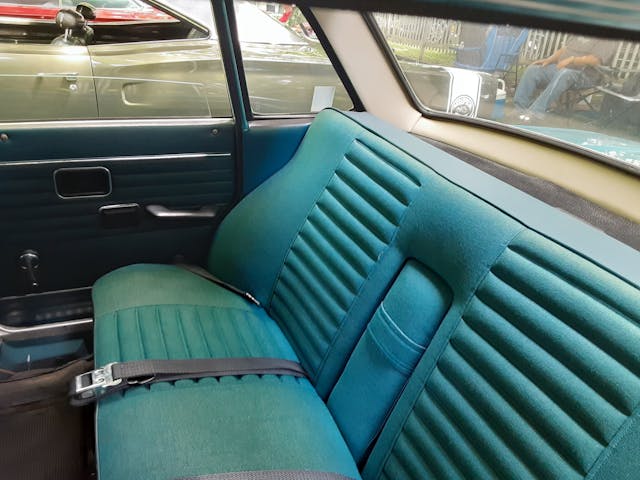
I hesitated to write about this car for several months because I couldn’t be sure what model year it was. I was pretty sure it was a 1969 or a ’70, but it was missing the U.S.-spec side marker lights that all of them had—and this car was sold new in Peoria, Illinois. But fortunately, a couple of weeks ago I stumbled upon a blog post about this very car and discovered the owner had removed the side markers for smoother look. Excellent! With the car’s proper year now identified, I was finally able to give it the spotlight it deserved.

And while I’m still atop my soapbox, let me close by thanking Volvo for continuing to make actual sedans and station wagons as of this writing—so many have stopped. I like cars more than trucks; I’ve never owned anything but sedans and station wagons and intend to keep it that way.
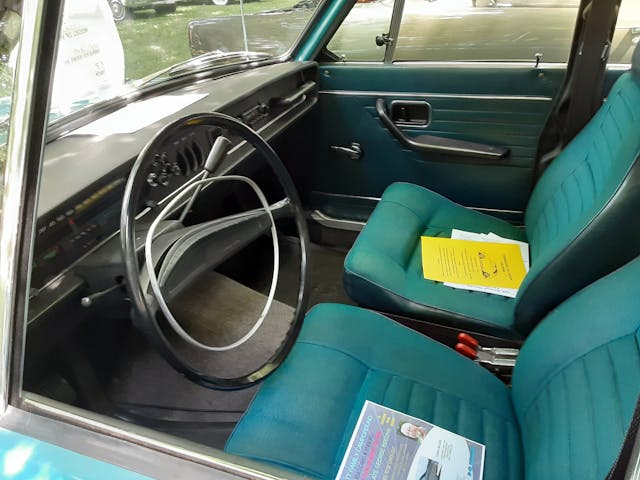
And I still love those boxy Volvos. I grew up with them, owned several myself, and still smile when I see a 1960s to ’80s “Ovlov!” Long may you roll, classic Volvo.
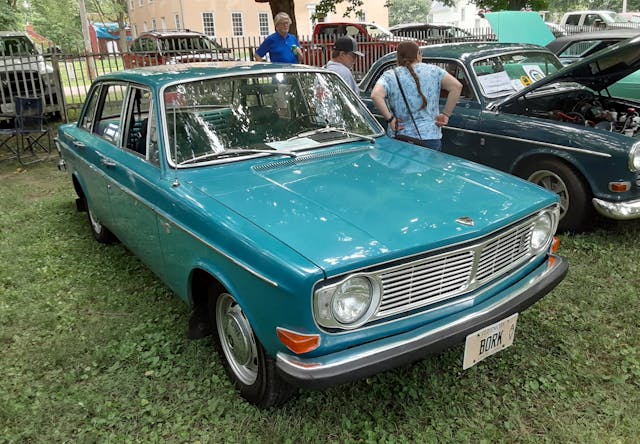
***
Check out the Hagerty Media homepage so you don’t miss a single story, or better yet, bookmark it. To get our best stories delivered right to your inbox, subscribe to our newsletters.


Tom my committee chair had one of these in the same color and your friend was correct that color faded. His still had his parking stickers from NYU where he did his PhD in the late 1960’s. I often wondered why a highly paid and regarded professor drove a 30 year old Volvo. I asked him about the car and he told me it was his first new car he purchased in 1970 and he just liked it. However he did keep a 911 whale tail in his garage for when he and his wife went on trips out on the town.
Interesting factoid… SKF (bearings and seals) started a brand of bearings called Volvo (I Roll in Swedish) and at some point stopped selling the brand and turned the name over to a car company that started in one of it’s idled factories
Hen’s tooth! It’s an automatic!
Not for nothing, but the name Volvo stems from the Latin infinitive verb volvere, which means “to roll”
I had a 1969 144 with the twin SU’s Been almost 30 years and I still miss it in even though I have had the pleasure of owning many other interesting rides. It just had a certain jun c’est quoi.
We owned a 1972.5 Volvo 145S. The half-year designation indicated it had inertial belts for the outboard rear seat passengers, so our kids could squirm without getting out of their belts. It also had one piece rear section windows, dropping the little flip vents of the earlier models. Loved that car, but a fourth child meant going to a larger (Plymouth Gran Fury in this case) sedan – without those inertia belts sadly.
I like the license plate. Some cool car shows in western Illinois. I do miss parts of Illinois but I’m never going back beyond a visit.
Like you, Thomas, I grew up in a Volvo. My Dad bought his first new car in 1972. It was a Volvo 164e. E = fuel injection. It was metallic blue with black leather upholstery, and the 4-speed manual with “electronic” overdrive. Dad put on bigger anti-sway bars, Bilstein shocks, and a hotter camshaft. All from IPD. He also added a glass pop up sunroof. (It was the 70’s.). My brother and I learned to drive in that 164. I was lucky enough to total it in 1983. Yep, I totaled a tank. Not my finest hour. Today, it is very difficult to find a 164 in good condition and they are very expensive. I know I’ll never be able to replace Dad’s car, but we all have fond memories of it!
“And there was nobody that was gonna polish up a 10-year-old Volvo at that time.”
I had a 1970 Volvo 145, the wagon, that I bought new in 1970. It was the dark blue with blue interior, the interior was the same as the featured Volvo. I had that car until 1984, when the clutch failed about a week before I was scheduled to relocate cross country. I ended up essentially giving the car away. But let me assure you that the car was polished up to the end of my ownership (14 years), that dark blue paint would shine up well with a little elbow grease.
My first direct exposure to Volvos occurred in 1963, when my summer job involved–among other things–running errands for the plant nursery owner in his company Volvo 544 (painted bright yellow, the company color), stirring around the long, magic-wand shifter and improving my recently learned stick-driving skill. The later 544s were one of, if not the first import “sport sedan,” whose banner was continued by BMW with its 1600-2 and eventually the 2002…and Volvo with its 123s. And then the sport sedan floodgates opened.
Some years later I babysat a friend’s 245 station wagon for several years while he was on a long-term assignment out of the country with the Air Force. While it spent most of its time stored away, I’d periodically drive it for a week or two to keep it exercised. Came in very handy for carrying bits and pieces of a car restoration I was working on to and from the sandblaster.
Had 122s, P1800, 164 and 145.
Loved those old Volvos especially the 122 third gear on the expressway.
My first car in 1972 was a 1967 Volvo 142S two door sedan with the 4 speed manual transmission. It was light blue with a black vinyl interior, steel wheels and the B18B engine. I loved that car and did most of the maintenance myself. Took me all over, including trips to Quebec, Washington DC and the F1 race at Watkins Glen. Wouldn’t mind another one, that’s for sure. Good memories. Thanks.
I never understood why, in a snowy country like Sweden (and with the FWD Saab as a competitor), Volve stuck with RWD for so long.
Because it’s more complicated than just which end the engine and the drive wheels are on!
l worked at a Saab dealer where we sourced narrower tires for winter use (this was before modern winter tires were commonly available) for the folks who lived out in the country where the wider tires that came standard on the cars were wider than ideal for snow driving conditions. Works on RWD too. l believe Volvos used “just” 195-width tires for a long time.
l also worked at a VW dealer and the ONLY time l needed a winter push to help my American RWD car (with Shell-branded summer bias-belted tires!) out of the parking lot was on the same day that l helped many co-workers push their VW Rabbits and Jettas!
Familiarity of drivers in snow conditions is a big factor. Swedes probably know a thing or three about the white stuff, and even those with RWD cars in days of old had little difficulty in getting around. The municipalities there have snow equipment and know how to handle it – as do the seasoned drivers – unlike many west coast and near-south cities in North America.
Weight distribution would obviously be a factor, too. If a car was closer to the “ideal” 50/50, but RWD, then a FWD/front engine would be of no winter advantage. And vicey-versey!
In 1970 my 1969 Corolla was dying. I bought a neglected one year old Volvo 142 manual. It had been run with very low oil. I had a great mechanic rebuild the engine with a few improvements. I drove the car for 10 years. It was trouble free except for the bad adhesive on the window hardware. The twin carbs never gave trouble. The heat worked in 20 below NH. A set of snow tires got me to work the day after the blizzard of 1978, even though the roads were closed. It is still the yardstick I measure cars by.
I had a 66 Volvo 122S for a year and regretted selling it ever since. Indestructible for a 17 year old. Later on I had a 71 Volvo 142GT. Another excellent car with some sporting pretentions but a bit more room than the 122S. Both cars were solid and had over 150000 miles when I sold them for other interesting vehicles. I remember meeting a guy at Watkins Glen about 20 years ago who had a 245 wagon which he converted to a 3 door with a 350 souped up Chev engine and 4 speed. he cleverly made the label on the tail gate read 238 for 2 series, 3 door v8. It looked like a factory car. Never saw it again but I still remember it.